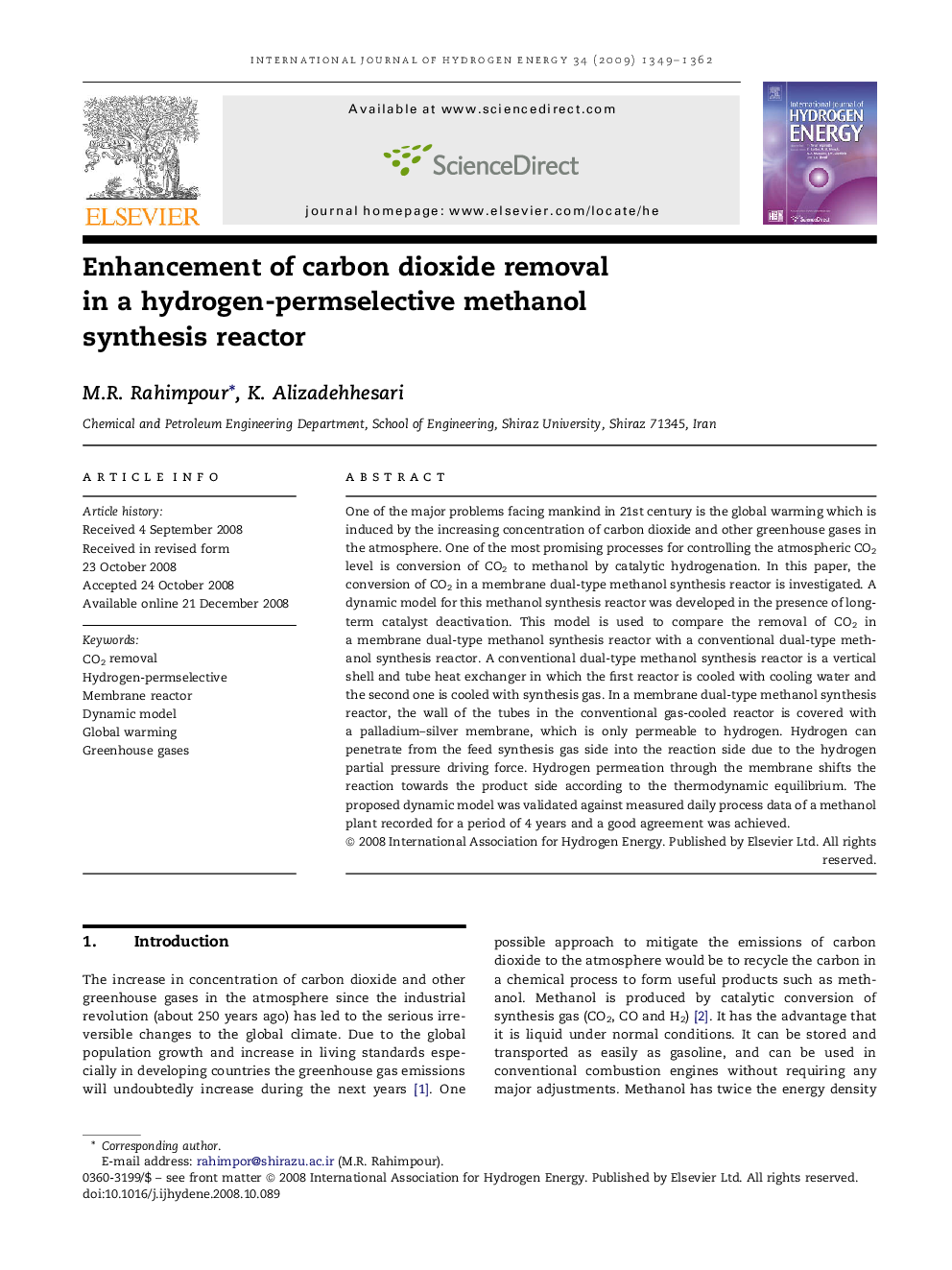| Article ID | Journal | Published Year | Pages | File Type |
|---|---|---|---|---|
| 1283343 | International Journal of Hydrogen Energy | 2009 | 14 Pages |
One of the major problems facing mankind in 21st century is the global warming which is induced by the increasing concentration of carbon dioxide and other greenhouse gases in the atmosphere. One of the most promising processes for controlling the atmospheric CO2 level is conversion of CO2 to methanol by catalytic hydrogenation. In this paper, the conversion of CO2 in a membrane dual-type methanol synthesis reactor is investigated. A dynamic model for this methanol synthesis reactor was developed in the presence of long-term catalyst deactivation. This model is used to compare the removal of CO2 in a membrane dual-type methanol synthesis reactor with a conventional dual-type methanol synthesis reactor. A conventional dual-type methanol synthesis reactor is a vertical shell and tube heat exchanger in which the first reactor is cooled with cooling water and the second one is cooled with synthesis gas. In a membrane dual-type methanol synthesis reactor, the wall of the tubes in the conventional gas-cooled reactor is covered with a palladium–silver membrane, which is only permeable to hydrogen. Hydrogen can penetrate from the feed synthesis gas side into the reaction side due to the hydrogen partial pressure driving force. Hydrogen permeation through the membrane shifts the reaction towards the product side according to the thermodynamic equilibrium. The proposed dynamic model was validated against measured daily process data of a methanol plant recorded for a period of 4 years and a good agreement was achieved.
